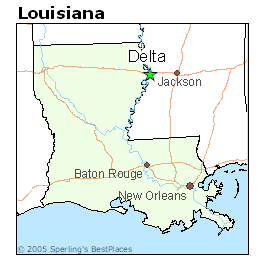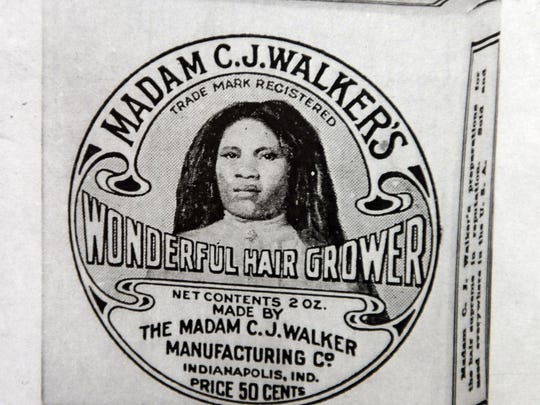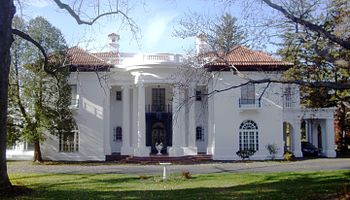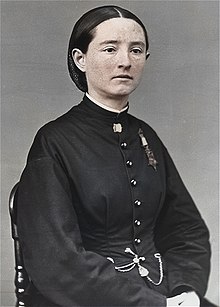Wilma Mankiller¹ was the first female Principal Chief of the Cherokee Nation and was an instrumental part of reshaping the way the United States Federal Government interacts with Native American Nations. During her eleven years as Chief, she brought running water and electricity to Cherokee in rural and impoverished areas, revitalized the reservation school system, and won back the right for the Cherokee people to control their own government funds and programs.
Born November 18, 1945, Wilma Mankiller was number six of eleven children living in a tiny four-room house. Her parents, Charlie Mankiller and Irene Sitton, were very poor, relying on food they grew themselves and itinerant agriculture jobs in Colorado to survive. Their home, located on Mankiller Flats², lacked both electricity and running water.
In 1956, Wilma's family participated in the government relocation program signed into law by the Indian Relocation Act of 1956. This act exchanged reservation land for homes and vocational training in cities. Around 30,000 Native Americans participated in the program, moving to Los Angeles, Salt Lake City, Denver, Dallas, and other large urban areas. Participants were promised reimbursement for moving expenses, as well as money to live on for a month after moving. This was widely seen by Native Americans as a way to improve lives for their children, as communities on reservations were, and continue to be, very poor.
Much to Wilma's chagrin, her parents decided to take advantage of the opportunity, and packed up their home. They chose to relocate to San Francisco, as it was close to where Irene's mother lived. Wilma was distraught by this move. It was a complete culture shock for her, moving from a tiny rural community to a large city.
Life didn't improve much for the Mankillers in the city. The Federal Government reneged on their deal, and much of the assistance promised to the Mankillers, as well as thousands of others, never arrived. For many Native Americans this meant homelessness, as the promised money and jobs never materialized. For the Mankillers, this meant that Wilma's father and brothers had to work long hours in factories, and the family lived in a dangerous housing project.
Wilma graduated high school in 1963 and married Ecuadorian businessman Hector Hugo Olaya de Bardi shortly after. In an interview with an Oklahoma radio station, Wilma described Hector as being handsome and kind. He wanted to rescue her from her life of poverty, and he very much wanted Wilma to be a traditional 1960s housewife. They had two daughters together--Gina and Felicia--and lived happily for several years.
Everything changed for Wilma when a group of Native American activists occupied Alcatraz Island on November 20, 1969. In a movement comparable to the 2016-2017 Standing Rock Protests, a group of native and non-native protesters gathered on Alcatraz island and refused to leave. The Occupation of Alcatraz was based off the terms of the Treaty of Fort Laramie, an 1868 treaty between the US Federal Government and the Lakota people which stated that abandoned federal lands would revert back to the tribes who previously occupied them. When the Alcatraz penitentiary closed down in 1963, the land once again became native property. However, as is always the case, the US Federal Government had no intention of honoring this treaty. The issue of Alcatraz may have been swept under the rug entirely had not a group of 89 Native Americans claimed the island.
The occupation was an eye-opener for Wilma. San Francisco of the '60s was a wild place at the heart of the feminist, civil rights, and gay rights movements, and Wilma was no stranger to activism. Her parents had been involved in organizing community programs, and she was surrounded by young people attempting to make a difference. However, the occupation inspired Wilma to get involved herself. She followed the occupation obsessively, and visited and fund-raised for the protesters, taking them food with her young daughters on several occasions. She was also inspired to do some research into her own history. She read stories about the Haudenosaunee, and realized how Eurocentric the historical narrative being presented in schools was, and she decided to help educate the public about native history. She held public forums and sponsored films about native history.
During this time, Wilma also started to seriously get involved in social work. Realizing that dropout rates among Native American teens were rising, Wilma helped create after-school programs for Native American students and became the Indian Affairs Coordinator for the Oakland School District. All of this gave her valuable experience that would help her later.
While Wilma was doing fantastic things for her community, her activism was hard on her personal life. Her husband, never too keen on his wife doing non-wifely things, had grown even more chagrined as she started and completed college and started to get more and more involved in native affairs. In 1977 they divorced, and Wilma moved her and her two daughters back to Oklahoma.
Arriving back at Mankiller Flats, Wilma saw how poor her community was. She wanted to build up her community, so she began to collaborate with the Principal Chief of the Cherokee nation, Ross Swimmer. She created and served in the role of Community Coordinator, helping to oversee social programs for the nation. She also began to study infrastructure development as a graduate student at the University of Arkansas at Fayetteville.
Wilma had a considerable commute between her work and school, and in 1979, she was involved in a catastrophic traffic accident that would claim the life of her best friend, Sherry Morris. Wilma had been driving up a hill when Sherry attempted to pass another vehicle on a blind curve. Wilma and Sherry collided head on, destroying the two cars. Wilma had to be cut out of her car and was rushed to the hospital. Her ribs, face, and left leg had been crushed, and her right leg broken. Sherry Morris died in the ambulance.
The accident would result in Wilma spending a year in recovery. She spent much of that year in a wheelchair. She also developed myasthenia gravis, a disease which made it difficult for her to chew or speak. She continued to work when she could however, and she eventually recovered. She would later attribute her recovery to her integration of the Cherokee idea of "being of good mind" into her life. For Wilma, "being of good mind" meant accepting what the Creator threw at her and finding the positive in her circumstances.
This was just one of many periods of health difficulties in Wilma's life. She would later have to have a kidney transplant and have cancer three times.
Following recovery, Wilma remained busy. She honed in on the Bell Community, a tiny town in rural Adair County. Much like Mankiller Flats, Bell was deeply impoverished. A quarter of the homes didn't have indoor plumbing, and almost none of them had running water. Homes were dilapidated to the point of danger, and school enrollment in the community was dropping. Bell wasn't on the Cherokee reservation, but most of the citizens were Cherokee, and several spoke only Cherokee. Ross Swimmer and Wilma agreed that something needed to be done. They decided that the Cherokee Nation would team up with Bell to approve the community. The nation would provide engineers and materials, and Bell would provide the manpower.
This kicked off a several years' long coordination project between the Cherokee Nation and Bell. Wilma hit the road along with Cherokee traditionalist and activist, Charlie Soap. The pair would spend many hours persuading Bell citizens to cooperate with the nation and coordinated community efforts for different projects.
The biggest achievement of this project was the Bell Waterline, a sixteen-mile-long pipeline that brought fresh water to the community. The pipe was built in two-mile segments, with each segment being done by a different family. It was Wilma's job to make sure that each person was performing the right job at the right time in the right place. The project was a wild success, leading the way for future community development projects. The project also led to Wilma marrying Charlie Soap. They would remain married until her death in 2010.
With the Bell project behind her, Wilma was beginning to become quite well known. Still, it was a surprise to everyone when Ross Swimmer asked her to run as his deputy chief in 1983.
There was significant pushback at the announcement of Wilma's candidacy. Many voters didn't like that she was a woman, a Democrat, an outspoken activist, and new to politics. Campaign signs with her name on them were burned, her tires were slashed, and Wilma received death threats.³ Many of the people running for Tribal Council along with Swimmer threatened to not run if he didn't drop Wilma from the ticket. Swimmer refused. He would later tell Wilma that he wanted her as his deputy chief because she loved what she did and she was honest with money. They won with a slim majority.
Finally, instead of petitioning government officials to allocate funds to community projects, Wilma was able to allocate funds herself and get social programs done. She and Swimmer worked together for two years before he stepped down to head up the Bureau of Indian affairs, leaving Wilma as the first Principal Chief of the Cherokee Nation. Though she experienced resistance from some members of her Tribal Council, Wilma won their respect. She would be elected for two more terms, retiring in 1995.
During her time as chief, Wilma oversaw a great deal of social improvements. She helped build clinics in rural areas, revitalize failing schools, and create housing. Under her leadership, infant mortality levels went down and education levels went up. Employment rates doubled, and tribal enrollment tripled. Notably, in 1990 she was instrumental in negotiating a self-governance agreement from the US Federal Government that, for the first time since 1907, allowed the Cherokee people direct control over their own funds and government programs.
Wilma passed away from pancreatic cancer on April 6, 2010. She left an enormous legacy behind her and greatly improved the lives of her people. She spent her life working to fix the un-glamorous problems of poverty and left her community much richer for it. She received recognition for her work in 1998 when President Bill Clinton awarded her the Presidential Medal of Honor.
If you want to help continue Wilma's life's work, you can donate to the Wilma Mankiller Foundation here.
¹"Mankiller" was a title given to high ranking warriors in small Cherokee communities. This title belonged to one of Wilma's forebearers and was assigned to the family as their surname by a census official. "Mankiller" is, without doubt, one of the most epic surnames available.
²Mankiller Flats is part of the 160 acres allotted to Wilma's great-grandfather in 1907. Cherokee lands that had once been held in common were allotted into 160-acre plots. As of 2009, Wilma's family held 100 acres and her cousins 60.
³Wilma told the aforementioned Oklahoma radio station that during this time she received several phone calls from an unknown number. The caller would call, say nothing, cock a gun, and hang up.
This article edited by Mara Kellogg.
Sources
Makiller: a Chief and Her People by Wilma Mankiller and Michael Wallis
Wilma Mankiller-National Women's History Museum
Wilma Mankiller-Encyclopedia of World Biography
About Wilma-Mankiller Foundation
Wilma Mankiller-FemBio
Wilma Mankiller-Women on 20s
Just Doing "What I Could", Wilma Mankiller Changed Native America-Smithsonian Voices
October 13, 2008 Radio Interview With NPR
August 13, 2009 Interview with Voices of Oklahoma
 |
| Wilma |
In 1956, Wilma's family participated in the government relocation program signed into law by the Indian Relocation Act of 1956. This act exchanged reservation land for homes and vocational training in cities. Around 30,000 Native Americans participated in the program, moving to Los Angeles, Salt Lake City, Denver, Dallas, and other large urban areas. Participants were promised reimbursement for moving expenses, as well as money to live on for a month after moving. This was widely seen by Native Americans as a way to improve lives for their children, as communities on reservations were, and continue to be, very poor.
Much to Wilma's chagrin, her parents decided to take advantage of the opportunity, and packed up their home. They chose to relocate to San Francisco, as it was close to where Irene's mother lived. Wilma was distraught by this move. It was a complete culture shock for her, moving from a tiny rural community to a large city.
Life didn't improve much for the Mankillers in the city. The Federal Government reneged on their deal, and much of the assistance promised to the Mankillers, as well as thousands of others, never arrived. For many Native Americans this meant homelessness, as the promised money and jobs never materialized. For the Mankillers, this meant that Wilma's father and brothers had to work long hours in factories, and the family lived in a dangerous housing project.
Wilma graduated high school in 1963 and married Ecuadorian businessman Hector Hugo Olaya de Bardi shortly after. In an interview with an Oklahoma radio station, Wilma described Hector as being handsome and kind. He wanted to rescue her from her life of poverty, and he very much wanted Wilma to be a traditional 1960s housewife. They had two daughters together--Gina and Felicia--and lived happily for several years.
 |
| The Occupation of Alcatraz lasted 19 months before fizzling out and dying. |
The occupation was an eye-opener for Wilma. San Francisco of the '60s was a wild place at the heart of the feminist, civil rights, and gay rights movements, and Wilma was no stranger to activism. Her parents had been involved in organizing community programs, and she was surrounded by young people attempting to make a difference. However, the occupation inspired Wilma to get involved herself. She followed the occupation obsessively, and visited and fund-raised for the protesters, taking them food with her young daughters on several occasions. She was also inspired to do some research into her own history. She read stories about the Haudenosaunee, and realized how Eurocentric the historical narrative being presented in schools was, and she decided to help educate the public about native history. She held public forums and sponsored films about native history.
During this time, Wilma also started to seriously get involved in social work. Realizing that dropout rates among Native American teens were rising, Wilma helped create after-school programs for Native American students and became the Indian Affairs Coordinator for the Oakland School District. All of this gave her valuable experience that would help her later.
While Wilma was doing fantastic things for her community, her activism was hard on her personal life. Her husband, never too keen on his wife doing non-wifely things, had grown even more chagrined as she started and completed college and started to get more and more involved in native affairs. In 1977 they divorced, and Wilma moved her and her two daughters back to Oklahoma.
Arriving back at Mankiller Flats, Wilma saw how poor her community was. She wanted to build up her community, so she began to collaborate with the Principal Chief of the Cherokee nation, Ross Swimmer. She created and served in the role of Community Coordinator, helping to oversee social programs for the nation. She also began to study infrastructure development as a graduate student at the University of Arkansas at Fayetteville.
Wilma had a considerable commute between her work and school, and in 1979, she was involved in a catastrophic traffic accident that would claim the life of her best friend, Sherry Morris. Wilma had been driving up a hill when Sherry attempted to pass another vehicle on a blind curve. Wilma and Sherry collided head on, destroying the two cars. Wilma had to be cut out of her car and was rushed to the hospital. Her ribs, face, and left leg had been crushed, and her right leg broken. Sherry Morris died in the ambulance.
| Cherokee Nation Headquarters in Tahlequah, Oklahoma. Wilma worked here from 1978-1995. |
This was just one of many periods of health difficulties in Wilma's life. She would later have to have a kidney transplant and have cancer three times.
Following recovery, Wilma remained busy. She honed in on the Bell Community, a tiny town in rural Adair County. Much like Mankiller Flats, Bell was deeply impoverished. A quarter of the homes didn't have indoor plumbing, and almost none of them had running water. Homes were dilapidated to the point of danger, and school enrollment in the community was dropping. Bell wasn't on the Cherokee reservation, but most of the citizens were Cherokee, and several spoke only Cherokee. Ross Swimmer and Wilma agreed that something needed to be done. They decided that the Cherokee Nation would team up with Bell to approve the community. The nation would provide engineers and materials, and Bell would provide the manpower.
This kicked off a several years' long coordination project between the Cherokee Nation and Bell. Wilma hit the road along with Cherokee traditionalist and activist, Charlie Soap. The pair would spend many hours persuading Bell citizens to cooperate with the nation and coordinated community efforts for different projects.
| Bell, Oklahoma. At the 2010 census, Bell had 535 residents |
With the Bell project behind her, Wilma was beginning to become quite well known. Still, it was a surprise to everyone when Ross Swimmer asked her to run as his deputy chief in 1983.
There was significant pushback at the announcement of Wilma's candidacy. Many voters didn't like that she was a woman, a Democrat, an outspoken activist, and new to politics. Campaign signs with her name on them were burned, her tires were slashed, and Wilma received death threats.³ Many of the people running for Tribal Council along with Swimmer threatened to not run if he didn't drop Wilma from the ticket. Swimmer refused. He would later tell Wilma that he wanted her as his deputy chief because she loved what she did and she was honest with money. They won with a slim majority.
Finally, instead of petitioning government officials to allocate funds to community projects, Wilma was able to allocate funds herself and get social programs done. She and Swimmer worked together for two years before he stepped down to head up the Bureau of Indian affairs, leaving Wilma as the first Principal Chief of the Cherokee Nation. Though she experienced resistance from some members of her Tribal Council, Wilma won their respect. She would be elected for two more terms, retiring in 1995.
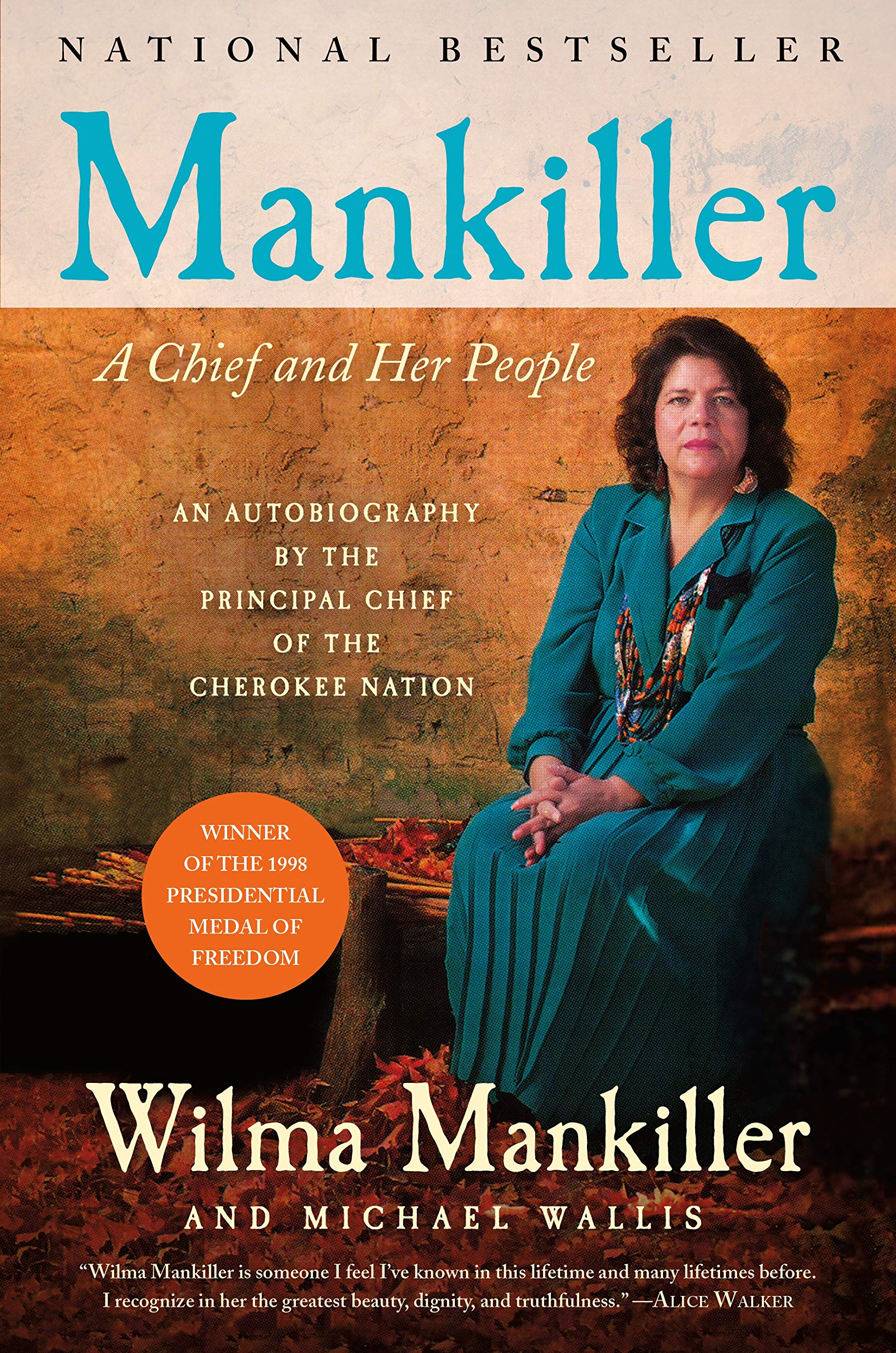 |
| Wilma's autobiography |
Wilma passed away from pancreatic cancer on April 6, 2010. She left an enormous legacy behind her and greatly improved the lives of her people. She spent her life working to fix the un-glamorous problems of poverty and left her community much richer for it. She received recognition for her work in 1998 when President Bill Clinton awarded her the Presidential Medal of Honor.
If you want to help continue Wilma's life's work, you can donate to the Wilma Mankiller Foundation here.
¹"Mankiller" was a title given to high ranking warriors in small Cherokee communities. This title belonged to one of Wilma's forebearers and was assigned to the family as their surname by a census official. "Mankiller" is, without doubt, one of the most epic surnames available.
²Mankiller Flats is part of the 160 acres allotted to Wilma's great-grandfather in 1907. Cherokee lands that had once been held in common were allotted into 160-acre plots. As of 2009, Wilma's family held 100 acres and her cousins 60.
³Wilma told the aforementioned Oklahoma radio station that during this time she received several phone calls from an unknown number. The caller would call, say nothing, cock a gun, and hang up.
This article edited by Mara Kellogg.
Makiller: a Chief and Her People by Wilma Mankiller and Michael Wallis
Wilma Mankiller-National Women's History Museum
Wilma Mankiller-Encyclopedia of World Biography
About Wilma-Mankiller Foundation
Wilma Mankiller-FemBio
Wilma Mankiller-Women on 20s
Just Doing "What I Could", Wilma Mankiller Changed Native America-Smithsonian Voices
October 13, 2008 Radio Interview With NPR
August 13, 2009 Interview with Voices of Oklahoma


